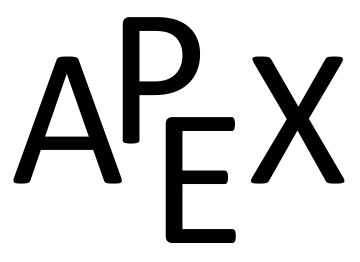Integration review.
Recall from Section 14.1 that when \(R\) is a region in the \(xy\)-plane, \(\iint_R dA\) gives the area of the region \(R\text{.}\) The integral symbols are “elongated esses” meaning “sum” and \(dA\) represents “a small amount of area.” Taken together, \(\iint_R dA\) means “sum up, over \(R\text{,}\) small amounts of area.” This sum then gives the total area of \(R\text{.}\) We use two integral symbols since \(R\) is a two-dimensional region.
Now let \(z=f(x,y)\) represent a surface. The integral \(\iint_R f(x,y)\, dA\) means “sum up, over \(R\text{,}\) function values (heights) given by \(f\) times small amounts of area.” Since “height × area = volume,” we are summing small amounts of volume over \(R\text{,}\) giving the total signed volume under the surface \(z=f(x,y)\) and above the \(xy\)-plane.
This notation does not directly inform us how to evaluate the double integrals to find an area or a volume. With additional work, we recognize that a small amount of area \(dA\) can be measured as the area of a small rectangle, with one side length a small change in \(x\) and the other side length a small change in \(y\text{.}\) That is, \(dA = dx\,dy\) or \(dA = dy\,dx\text{.}\) We could also compute a small amount of area by thinking in terms of polar coordinates, where \(dA = r\,dr\,d\theta\text{.}\) These understandings lead us to the iterated integrals we used in Chapter 14.
Let us back our review up farther. Note that \(\int_1^3\, dx = x\big|_1^3 = 3-1 = 2\text{.}\) We have simply measured the length of the interval \([1,3]\text{.}\) We could rewrite the above integral using syntax similar to the double integral syntax above:
\begin{equation*}
\int_1^3\, dx = \int_Idx, \text{ where \(I\) = \([1,3]\) }\text{.}
\end{equation*}
We interpret “\(\int_I dx\)” as meaning “sum up, over the interval \(I\text{,}\) small changes in \(x\text{.}\)” A change in \(x\) is a length along the \(x\)-axis, so we are adding up along \(I\) small lengths, giving the total length of \(I\text{.}\)
We could also write \(\int_1^3f(x)\, dx\) as \(\int_I f(x)\, dx\text{,}\) interpreted as “sum up, over \(I\text{,}\) heights given by \(y = f(x)\) times small changes in \(x\text{.}\)” Since “height×length = area,” we are summing up areas and finding the total signed area between \(y = f(x)\) and the \(x\)-axis.
This method of referring to the process of integration can be very powerful. It is the core of our notion of the Riemann Sum. When faced with a quantity to compute, if one can think of a way to approximate its value through a sum, the one is well on their way to constructing an integral (or, double or triple integral) that computes the desired quantity. We will demonstrate this process throughout this chapter, starting with the next section.

